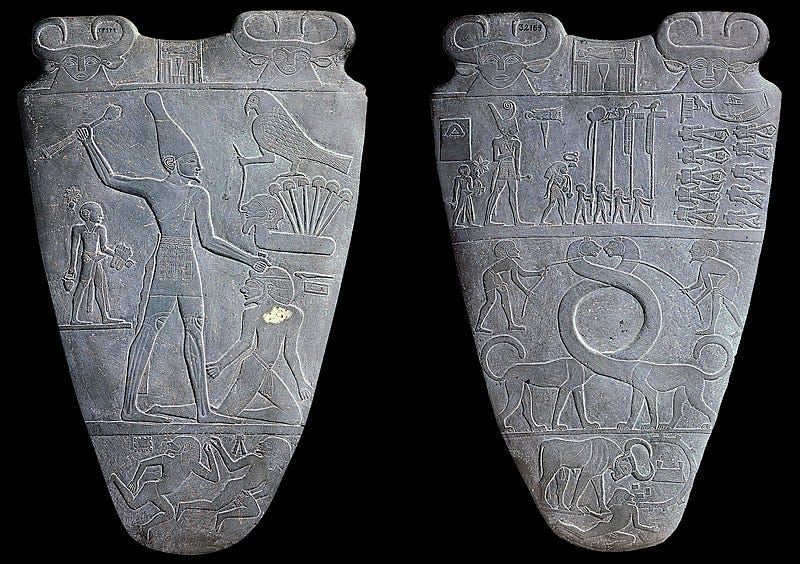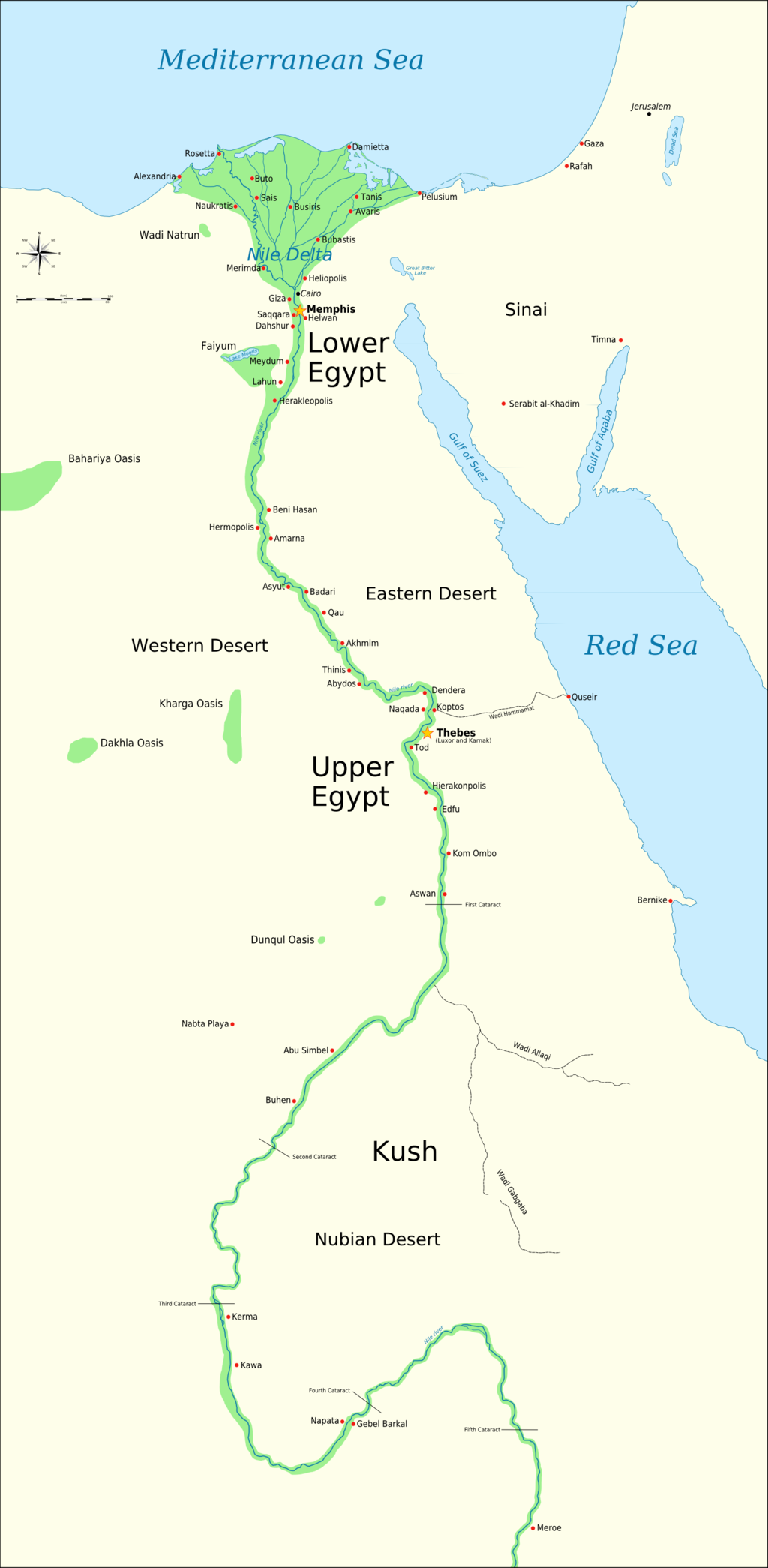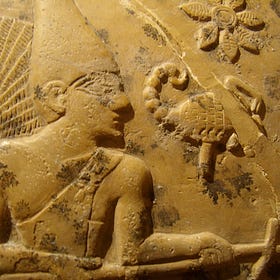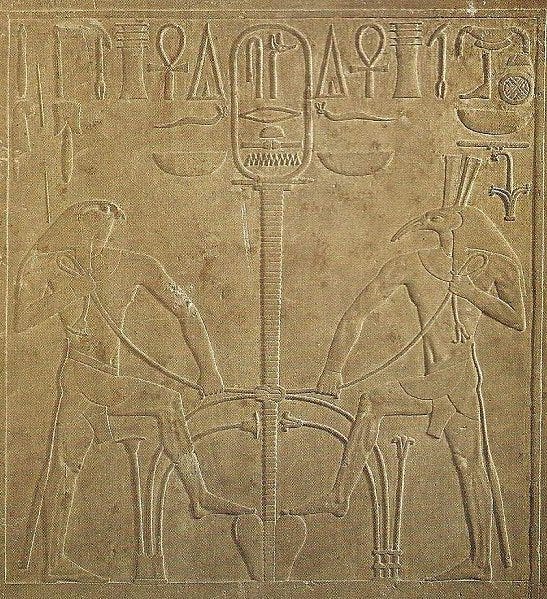Archaeologists Frederick Green and James Quibble stumbled on a unique artifact while excavating the Temple of Horus in Nekhen (Hierakonpolis), Egypt, in 1897. They discovered a two-foot-long, 5,000-year-old stone palette. On the slab’s front was a mace-wielding warrior adorned in a crown, implying that he was a king.
Green and Quibble had unearthed the Narmer Palette, a stone slab renowned for its early hieroglyphics and its depiction of Narmer's rise to power. He was Egypt's first Pharaoh. The sketches on the palette told the blood-soaked story of Egypt’s birth as a civilization, a watershed moment in history.
Unlike the stories of Romulus and Remus or Sargon of Akkad, the Narmer Palette was recorded during the Pharaoh's reign. You could say the stone was one of the first examples of historical documentation.
Let us explore the story of Egypt’s brutal unification by Narmer and how the Pharaoh reveled in a spectacle of death. But, before we get into his conquests, we’ll review what Egypt was like before the Pharaohs and how the palette was made.
Reminder: By choosing a paid membership (just $5 a month or $50 annually), you're helping amplify voices that history books too often overlook. Your support means these stories get the attention they deserve.
You’ll gain access to tons of members-only content👇
Full-length deep dives into untold stories, like this one: no paywalls, no cuts.
The entire archive of extraordinary tales from the Ice Age to the Fall of the Mongol Empire, the hottest archaeological finds, and the appetizing history of food.
Early access to special editions, be the first to dive in.
Join lively discussions in members-only posts and subscriber chats. Paid members can initiate conversations in the subscriber chat.
Pre-Dynastic Egypt: A Divided Land
Egypt's civilization emerged along the banks of the Nile. The lush river valley gave rise to numerous cities, which later evolved into significant political entities. These city-states were split into two regions: Upper Egypt and Lower Egypt.
Upper Egypt refers to the Nile Valley’s southern portion, whereas Lower Egypt refers to its northern part. Why does South Egypt have the name “Upper” and the north “Lower”?
The Nile River is nourished by two major tributaries: the Blue Nile, originating from Lake Tana in Ethiopia, and the White Nile, originating from Lake Victoria in Uganda. The two rivers meet at Sudan's capital, Khartoum, and flow northward via Egypt to the Mediterranean Sea. As the Nile runs from Sudan to the Mediterranean Sea, ancient Egyptians associated the north with the river's origin and the south with its terminus. Hence, the region between the 30th parallel N and the border of Sudan is termed "Upper Egypt." In comparison, the area between the Mediterranean Sea and the same latitude is known as "Lower Egypt."
The Pre-dynastic period refers to Egypt’s history before the rise of the Pharaohs. During this period, we see the emergence of the first written records in hieroglyphs, the development of irrigation systems, and the construction of the earliest royal tombs. The records of the rulers of Upper and Lower Egypt are unclear and are linked to gods. Scorpion I, the ruler of Upper Egypt c. 3200 BC, may have inspired the Hollywood film The Scorpion King. He might have been Narmer’s father and attempted to unite the two realms of Egypt. If you’d like to know more about King Scorpion, check out my earlier write-up.
In Search of the Real Scorpion King
Do you recall the 2002 movie The Scorpion King, starring Dwayne "the Rock" Johnson and Kelly Hu? Set in pre-dynastic Egypt (before 3100 BC), the film is a spinoff of the worldwide successful Mummy franchise. The Rock is shown as a hired Akkadian assassin tasked with killing a royal sorceress played by Kelly Hu.
The records of the Lower Egyptian kings are hazy. Double Falcon (c. 3200 BC) and Crocodile ( also read Shendjw, c 3170 BC) are two notable rulers. Their exact names are unknown, much like King Scorpion.
Upper Egyptians worshipped Set, whereas lower Egyptians worshipped Horus. The rulers of Upper Egypt wore the Hedjet, also known as the White Crown. In contrast, the monarchs of Lower Egypt donned the Red Crown, also known as the Deshret.
Around 3150 BC, Narmer became King of Upper Egypt and changed the course of his country’s history. He sought to unite the country under a single leadership. War was inevitable.
We'll discuss Narmer's campaign from the palette, but first, let's learn a few interesting facts about the palette's material and how ancient Egyptians created such masterpieces.
The Art of Sculpting a Royal Palette
The Narmer Palette is the largest known ancient Egyptian palette that survived. Made of siltstone, its dimensions are 64 cm × 42 cm, and it weighs about 9.4 kg (20.7 lbs). Siltstone, a distinct greenish-grey rock, was a popular material used to make palettes in ancient Egypt, dating back to the days of the Badarian culture. The Badarian culture was a pre-dynastic culture named after the site of el-Badari, Upper Egypt, which flourished from approximately 5000 BC to 4000 BC.
The siltstone most likely was extracted from a quarry near the Upper Egyptian town of Naqada. The exquisite craftsmanship was a continuation of the tradition of making delicate palettes found near Nekhen, such as the Battlefield Palette, the Libyan Palette, and the Four Dogs Palette.
Typically, craftsmen cut the palette’s outline from a two-foot slab of quarried stone and set the outlines of animals along the upper edges of the palette, as seen at the top of the Narmer Palette, which features two bulls on each side. Egyptologist John Romer suggests the unique oval-shaped design of the Narmer Palette is based on a large Naqadan storage jar. The Naqada culture, centered at Naqada, succeeded the Badarian culture and thrived from 4000 BC to 3000 BC. It was the core culture from which Upper Egypt’s city-states arose, with power centers at Naqada, Nekhen, and Abydos.
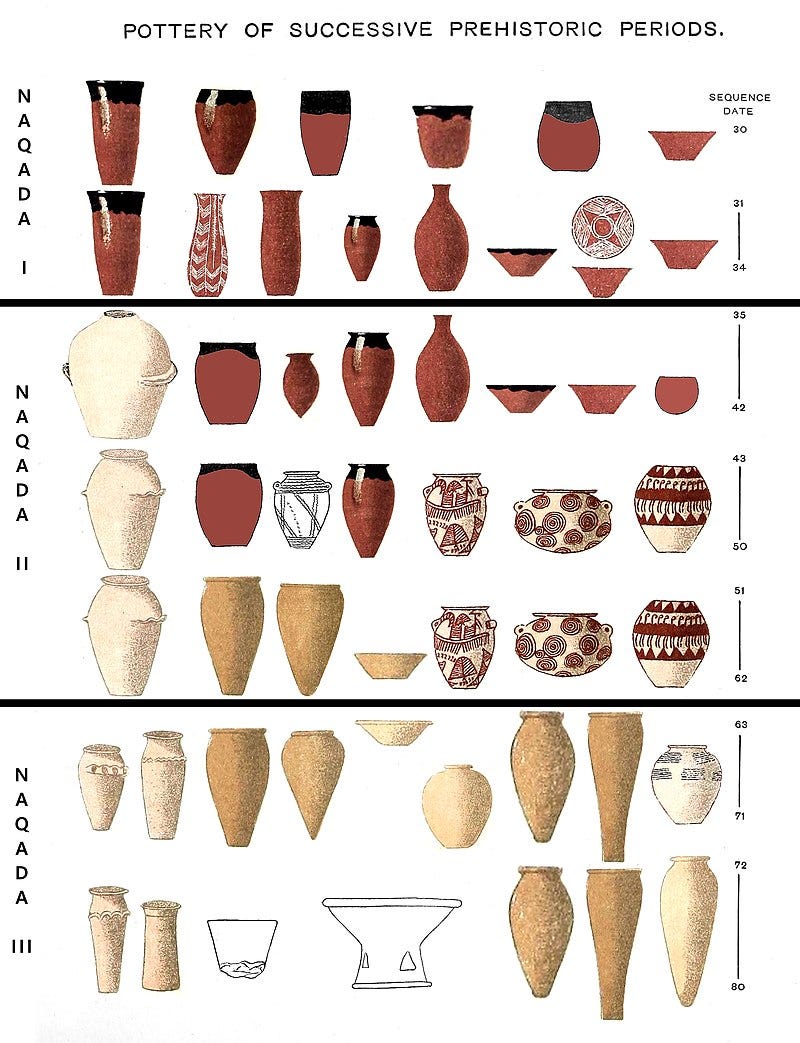
The blank stone slab, less than an inch thick, was tapered and smoothed so that the centers of both faces were forward compared to the edges. Next, a craftsman laid out the design and the order in which the subjects were to be carved on the palette. The final design had remarkable precision, with the width being two-thirds of the height.
The outline of the palette’s images was cut into its two convex surfaces using copper chisels, points, and flats. Following this, the artisans chiseled and abraded till the empty areas around each image were cut down and polished to a dull sheen.
After the detailed modeling and abrasion, the sculptor made a graphic outline around each figure with a tiny chisel point.
To give you an idea about how labor-intensive the process of making Narmer’s Palette was, a modern mason needed 600 hours to finish a replica.
The purpose of creating such a detailed and delicate work wasn’t merely aesthetic. Indeed, the palette gave Narmer a certain gravitas, befitting of Egypt’s first Pharaoh. However, the idea was to record history as it happened and tell future generations the story of Egypt’s unification.
Let us review the images on the palette and reconstruct the blood-soaked birth of one of the ancient world’s greatest civilizations.
Keep reading with a 7-day free trial
Subscribe to Forgotten Footprints to keep reading this post and get 7 days of free access to the full post archives.


